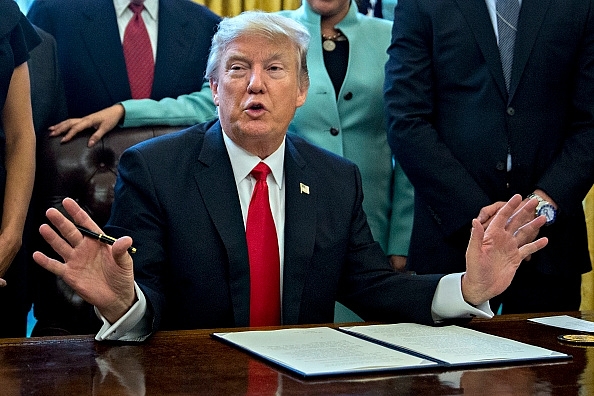
Reading Between The Lines Of Trump’s H-1B Visa Plan
US President Donald Trump has been working hard at his campaign promise of ‘bringing jobs back to America’. His pledge to stop the misuse of visa programmes by companies to undercut American workers, seems to be now acquiring a shape.
During his campaign trail, Trump did not directly blame India or mention any specific visa category including H-1B visa programme. But he did share a platform with Leo Perrero, who had become the posterboy of the anger against IT outsourcing by American Technology companies. Leo Perrero lost his job when Disney decided to outsource its IT work and was replaced by Indian IT workers on H1B Visasa. It must also be added that on few occasions Trump has spoken in favour of bringing talent into the US and has gone on record saying that “people could come to this country legally”.
So what’s on Trump’s mind?
An overhaul in the process of H-1B visas allocation.
An Axios report says that the proposed new visa regime would mean replacing the current lottery system with one that prioritises visas for jobs promising the highest salaries.
“A draft of Trump’s executive order directs the Secretary of Homeland Security to consider ways to make the process of H-1B allocation more efficient and ensure the beneficiaries of the program are the best and the brightest.”
The salary range: According to Labor Department data, the largest users of H-1B visas are India-based IT services companies such as Tata Consultancy, Wipro and Infosys who tend to pay visa-holding staff lower salaries. Tech companies such as Google, Microsoft, Intel and Cisco tend to promise higher wages for the foreign engineers they hire with H-1Bs.
Axios also reports that
The draft EO doesn’t order immediate changes to the H-1B allocation process. Tech industry insiders expect Trump will direct DHS, which runs the H-1B visa lottery system, to start a rule-making to re-prioritize the visa allocation to give preference to higher-paying firms. This pits tech firms against the Indian IT-staffing firms.”
On the impact of draft order on American Tech Companies
In theory, prioritising by salaries means visas for more senior, higher-paying jobs will be granted first, and visas for lower-paying jobs (such as those being filled by Indian IT services firms) would fall to the back of line, perhaps not getting allocated at all if demand for the high-wage job visas is strong.
On the impact of Draft Order on Indian IT Organisations
Since they’re more dependent on H-1B workers, so-called outsourcing firms will be hit hard if changes to the lottery system move them to the back of the line or cut them out altogether. Stock prices of leading firms Infosys and Wipro have already <a href="https://www.axios.com/indian-h1-b-companies-2228248276.html">taken a blow</a> in anticipation of reforms. For their part, many India-based firms have ramped up US recruiting to reduce its reliance on offshore visa holders, and they say they comply with visa system rules. Squeezing them too hard could drive the companies to move some US-based jobs to India.